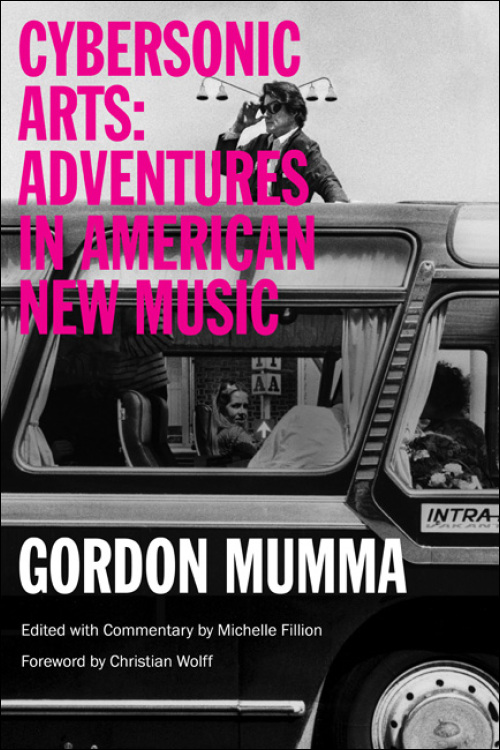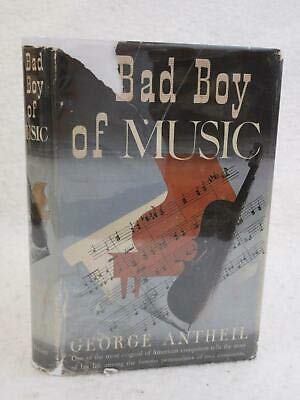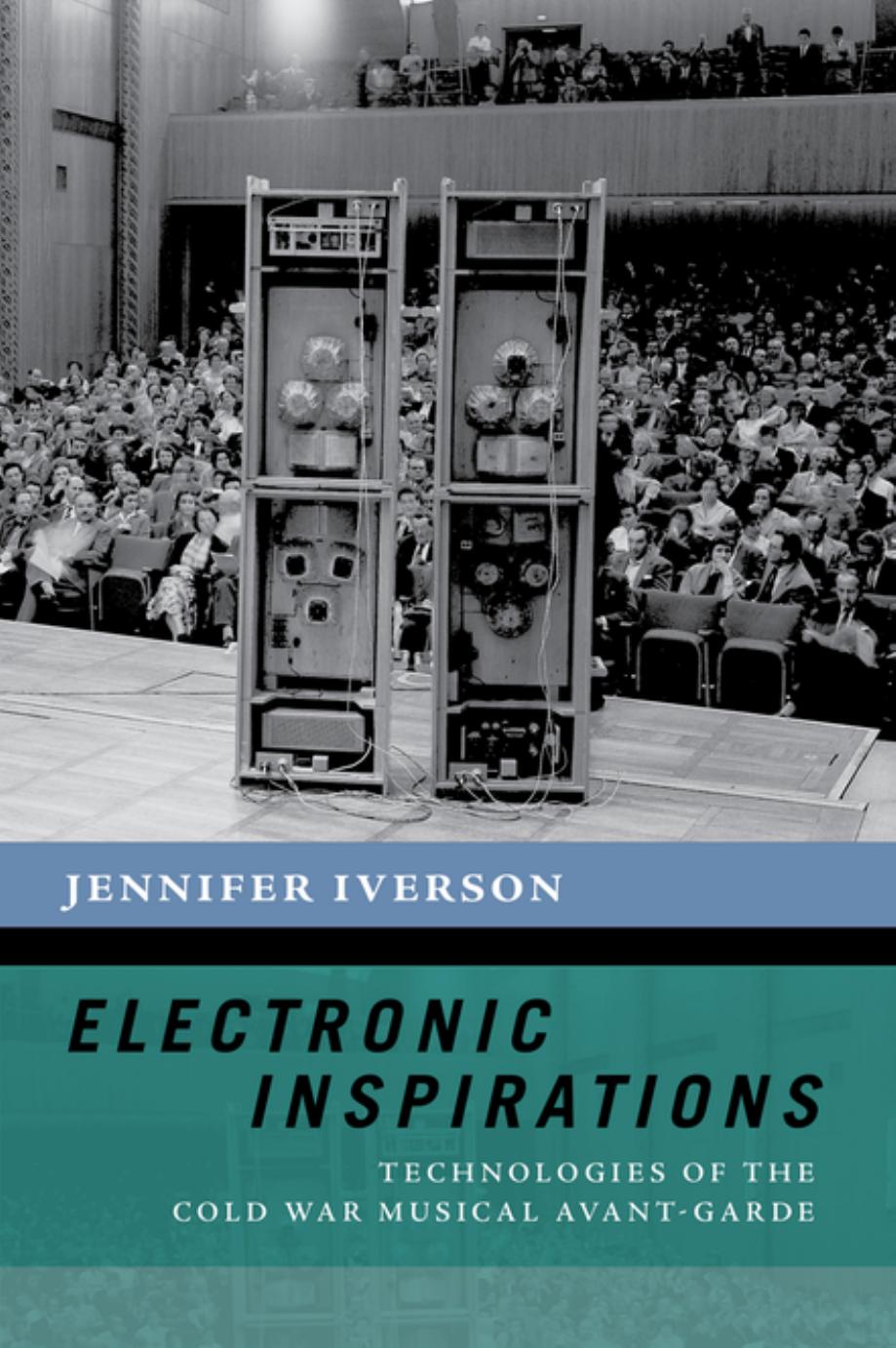Gordon Mumma: Cybersonic Arts: Adventures in American New Music (2015)
Filed under book | Tags: · avant-garde, composing, composition, electronic music, music, music history, performance

“A candid account of a broad artistic community by an active participant and observer
Composer, performer, instrument builder, teacher, and writer Gordon Mumma has left an indelible mark on the American contemporary music scene. A prolific composer and innovative French horn player, Mumma is recognized for integrating advanced electronic processes into musical structures, an approach he has termed “Cybersonics.”
Musicologist Michelle Fillion curates a collection of Mumma’s writings, presenting revised versions of his classic pieces as well as many unpublished works from every stage of his storied career. Here, through words and astonishing photos, is Mumma’s chronicle of seminal events in the musical world of the twentieth century: his cofounding the Cooperative Studio for Electronic Music; his role in organizing the historic ONCE Festivals of Contemporary Music; performances with the Sonic Arts Union; and working alongside John Cage and David Tudor as a composer-musician with the Merce Cunningham Dance Company. In addition, Mumma describes his collaborations with composers, performers, dancers, and visual artists ranging from Robert Ashley and Pauline Oliveros to Marcel Duchamp and Robert Rauschenberg.”
Edited with Commentary by Michelle Fillion
Foreword by Christian Wolff
Publisher University of Illinois Press, November 2015
ISBN 9780252039430, 0252039432
xxxiv+339 pages
Reviews: Eric Smigel (Intersections, 2015), Daniel Barbiero (Avant Music News, 2016), Aurelio Cianciotta (Neural, 2016).
PDF (updated on 2022-11-21)
Comment (0)George Antheil: Bad Boy of Music (1945–)
Filed under book | Tags: · avant-garde, biography, memoir, music, music history

George Antheil (1900-1959) was a radical American composer active in the early part of 20th century. He was recognised by the Parisian avant-garde literary community as a musical spokesman for their ideas. In the late 1920s Antheil participated in the operatic renaissance in Germany, and, after his return to America in 1933, he attempted to synthesize an American musical idiom in his neoromantic film, symphonic, chamber, and operatic scores.
In his autobiography, Antheil gives a fascinating account of the creative activity in Berlin, Paris, Vienna, New York and Hollywood, discussing his encounters with Igor Stravinsky, Hedy Lamarr, James Joyce, Man Ray, Ezra Pound, Sylvia Beach, W.B. Yeats, Erik Satie, Pablo Picasso, Cecil B. DeMille, Fritz Lang, Salvador Dalí and others.
First published by Doubleday, Doran & Co., Garden City, NY, 1945
Published in the UK by Hurst & Blackett, London, 1947
Reprinted by National Book Association / Hutchinson & Co., London, 1949
295 pages
via Tom Whitwell
Reviews: Milfred Norton (Hollywood Quarterly, 1946), Linda Whitesitt (American Music, 1984).
Commentary: Guy Livingston (ABC Radio National, 2015).
PDF (12 MB)
Comment (0)Jennifer Iverson: Electronic Inspirations: Technologies of the Cold War Musical Avant-Garde (2018)
Filed under book | Tags: · avant-garde, cold war, collaboration, cultural history, electroacoustic music, electronic music, information theory, music history, technology

“Cold War electronic music—made with sine tone and white-noise generators, filters, and magnetic tape—was the driving force behind the evolution of both electronic and acoustic music in the second half of the twentieth century. Electronic music blossomed at the Westdeutscher Rundfunk (WDR [West German Radio]) in Cologne in the 1950s, when technologies were plentiful and the need for cultural healing was great. Building an electronic studio, West Germany confronted the decimation of the “Zero Hour” and began to rebuild its cultural prowess. The studio’s greatest asset was its laboratory culture, where composers worked under a paradigm of invisible collaboration with technicians, scientists, performers, intellectuals, and the machines themselves. Composers and their invisible collaborators repurposed military machinery in studio spaces that were formerly fascist broadcasting propaganda centers. Composers of Cold War electronic music reappropriated information theory and experimental phonetics, creating aesthetic applications from military discourses. In performing such reclamations, electronic music optimistically signaled cultural growth and progress, even as it also sonified technophobic anxieties. Electronic music—a synthesis of technological, scientific, and aesthetic discourses—was the ultimate Cold War innovation, and its impacts reverberate today.”
Publisher Oxford University Press, New York, 2018
The New Cultural History of Music series
ISBN 9780190868192, 0190868198
xi+303 pages
Reviews: Lucie Vágnerová (Integral, 2019), Ted Gordon (Current Musicology, 2019), James Davis (Music & Letters, 2019), Maurice Windleburn (Sound Studies, 2020).
PDF (32 MB)
Comment (0)
